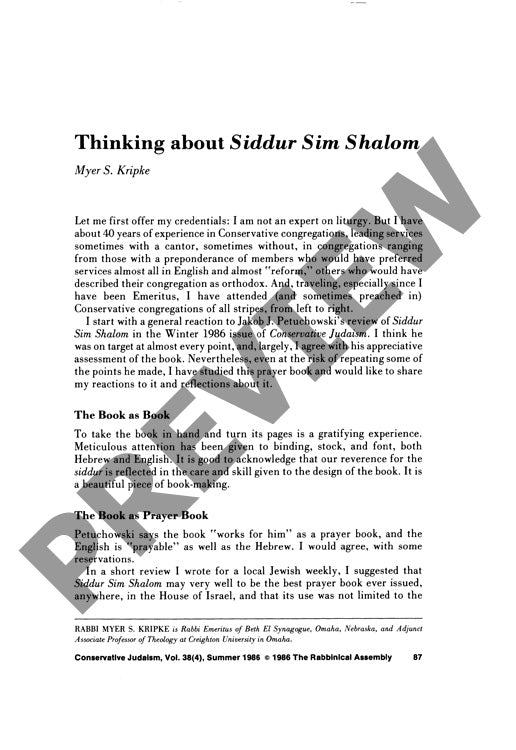Thinking About Siddur Sim Shalom
Couldn't load pickup availability
For four decades, Conservative Judaism's flagship prayer book Siddur Sim Shalom has shaped congregational worship while attempting to bridge ancient tradition with modern sensibilities. Through examination of the siddur's physical construction, liturgical functionality, theological implications, and translation quality, a complex portrait emerges of both remarkable achievement and persistent challenges. The prayer book's exceptional production quality and Jules Harlow's skillful translation work successfully render Hebrew texts into "prayable" English suited for diverse Conservative congregations. Yet significant concerns arise regarding the retention of korbanot (sacrificial service references), which remain theologically problematic and practically meaningless for contemporary worshippers. While the prose translations demonstrate consistent excellence, the analysis reveals inconsistencies in grammatical person shifts and comma usage, along with particularly problematic attempts at English poetry, notably in L'kha Dodi. Despite these limitations, Siddur Sim Shalom emerges as potentially "the best prayer book ever issued in the House of Israel," successfully balancing traditional elements with contemporary needs. This careful navigation between historical preservation and modern accessibility has produced a "workable, readable, usable" prayer book that enables intelligent and spirited Jewish worship across the Conservative movement's ideological spectrum.

More Information
-
Physical Description
-
Publication Information
Published 1986
ISBN
-
Publication Credits
Myer Kripke

